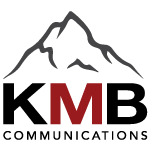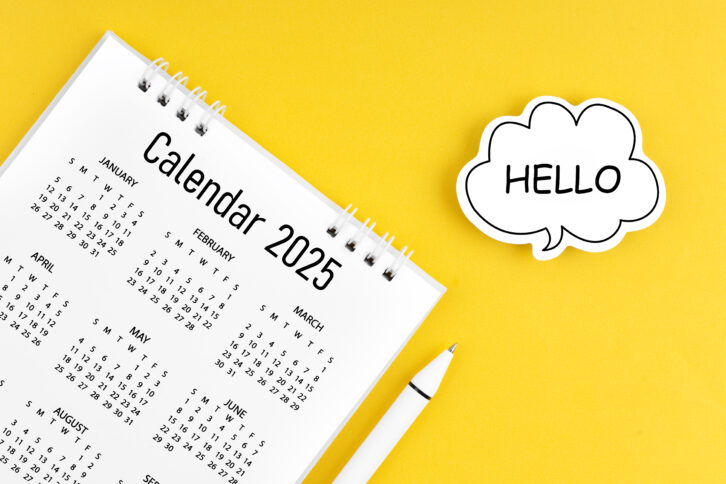Make this the year to do what often gets set aside before the end of Q1.
As we greet 2025 with renewed excitement, it can be easy to jump right in and get to work. However, if you haven’t done it already, now is the time to finish your homework. Before mid-January, technology integration firms need to focus on executing a proactive and strategic marketing plan. A comprehensive approach that includes a well-structured Content Marketing Calendar and thoughtful budget allocation is key to driving visibility, engaging with consumers, and staying ahead in a competitive marketplace. Here’s a roadmap to help you plan your content effectively. The key is to do it now.
The Power of a Content Marketing Calendar
A successful marketing strategy starts with a robust Content Marketing Calendar. This essential tool keeps your messaging consistent, relevant, and aligned with both industry trends and broader consumer interests. When done right, it becomes the backbone of your outreach, ensuring that your blogs, newsletters, and social media efforts resonate with your audience year-round.
- Identify Key Themes by Month. Begin by mapping out topics that align with the calendar year and consumer priorities. For example:
- January: “Smart Home Resolutions” — Showcase products or systems that promote sustainability, energy efficiency, and wellness.
- Spring: Focus on outdoor entertainment solutions and the convenience of automation as families prepare for warmer months.
- Summer Celebrations: Focus on graduations, weddings, parties, and gatherings and the ways technology can enhance the ambiance, convenience, and fun factor.
- Back-to-School Season: Highlight tech for home office setups, hybrid learning, and security solutions for busy households.
- Holiday Season: Push “giftable” solutions or create guides for hosting stress-free gatherings with smart technology.
- Use analytics tools, industry reports, and trending news topics to refine your themes. Sites like Google Trends, social media hashtags, and consumer tech publications can offer valuable insights into what’s capturing attention.
- Blend Original and Curated Content. Balance your calendar with original blogs, guest contributions from partners or manufacturers, and curated content from trusted sources. Not every piece needs to be from scratch, but all content should align with your brand voice and expertise.
- Diversify Content Formats. Today’s consumers expect variety. Mix long-form articles with short, digestible content like “how-to” videos, infographics, and Reels, Stories, and image carousel posts on social media.
- Leverage News Trends. Stay nimble by incorporating current events and trending topics into your schedule. For example, if a high-profile news story discusses cybersecurity risks, tailor a piece on smart home network protection to ride the wave of interest.
Budgeting: The 2% Rule and Beyond
Allocating an appropriate budget is essential for executing your marketing plan. While marketing budgets will vary by firm, a rule of thumb is to allocate at least 2 percent of your projected annual sales to marketing efforts. For some integration firms, this could mean shifting resources or reprioritizing expenses, but the ROI on an effective marketing strategy justifies the investment.
- Where to Allocate Funds. Divide your marketing budget strategically:
- Content Creation (30-40%): High-quality blogs, videos, and professional photography require investment. Don’t cut corners here — your content represents your brand.
- Social Media Advertising (20-30%): Platforms like Facebook, Instagram, and LinkedIn remain powerful tools for reaching targeted audiences. Use these channels for boosted posts or ads tailored to homeowners.
- Email Marketing Tools (10-15%): Platforms like Mailchimp and Constant Contact are critical for creating and automating newsletters and campaigns.
- SEO and Paid Search (10-20%): Ensure your website ranks well in searches with optimized content and paid ads that capture leads.
- Event Sponsorships or Local Collaborations (10-15%): Build awareness by participating in home shows, networking events, or partnering with builders and designers.
- Track and Adjust. As you execute your plan, measure what works and what doesn’t. Use tools like Google Analytics, email open rates, and social media engagement metrics to assess the effectiveness of your efforts and pivot when necessary.
Capitalize on Consumer Interest
In 2025, expect consumers to remain focused on topics like sustainability, security, health, and convenience. Tailor your messaging to address these concerns, weaving them into your marketing calendar and overall strategy. For example:
- Sustainability: Promote energy-efficient solutions and systems that reduce environmental impact.
- Security: Focus on smart locks, cameras, and monitoring services that provide peace of mind.
- Health and Wellness: Highlight technologies such as air purifiers, circadian lighting, and home fitness solutions.
- Convenience: Emphasize automation and voice control systems that simplify daily life.
- Personalization and Customization: Of current homebuyer-aged adults, 71% expect some level of personalization and customization in their homes.
Incorporate these topics into your plan and categorize and tag the content accordingly for added reach and visibility.
Plan for Consistency, but Stay Flexible
A Content Marketing Calendar isn’t set in stone. It’s a living document that should evolve as new trends emerge or consumer behaviors shift. Build time into your schedule for quarterly reviews to adjust your strategy and ensure alignment with your business goals.
Final Thoughts
In the fast-evolving residential technology market, marketing success in 2025 will come down to preparation, relevance, and execution. By developing a clear Content Marketing Calendar and committing at least 2% of your sales projections to marketing, your firm will be well-positioned to connect with customers and achieve measurable growth.
Take the time now to map out your plan, fine-tune your messaging, and set your team up for success. With a solid foundation and strategic focus, 2025 could be your best year yet.
Original article can be found at: https://www.residentialsystems.com/features/secrets-of-success/crafting-an-effective-content-marketing-calendar
—
A 25+ veteran of the residential tech & AV integration industries, Katye McGregor Bennett is the CEO of KMB Communications, a boutique communications firm that anchors the intersection of technology + design by connecting brands, buyers, and prospective audiences through creating compelling content and conversation that elevates and amplifies. In addition to co-hosting Design Uncut with Veronika Miller, Katye hosts two popular podcasts, Connecting Tech+ Design and AV Trade Talk. She is part of the DesignHounds influencer group and also serves on the NAHB Custom Technology Work Group, is a strategic advisor in the CEDIA, HTA, and AVIXA communities, a frequent contributor to Residential Systems, Connected Design and founder of the AV Yoga group.

